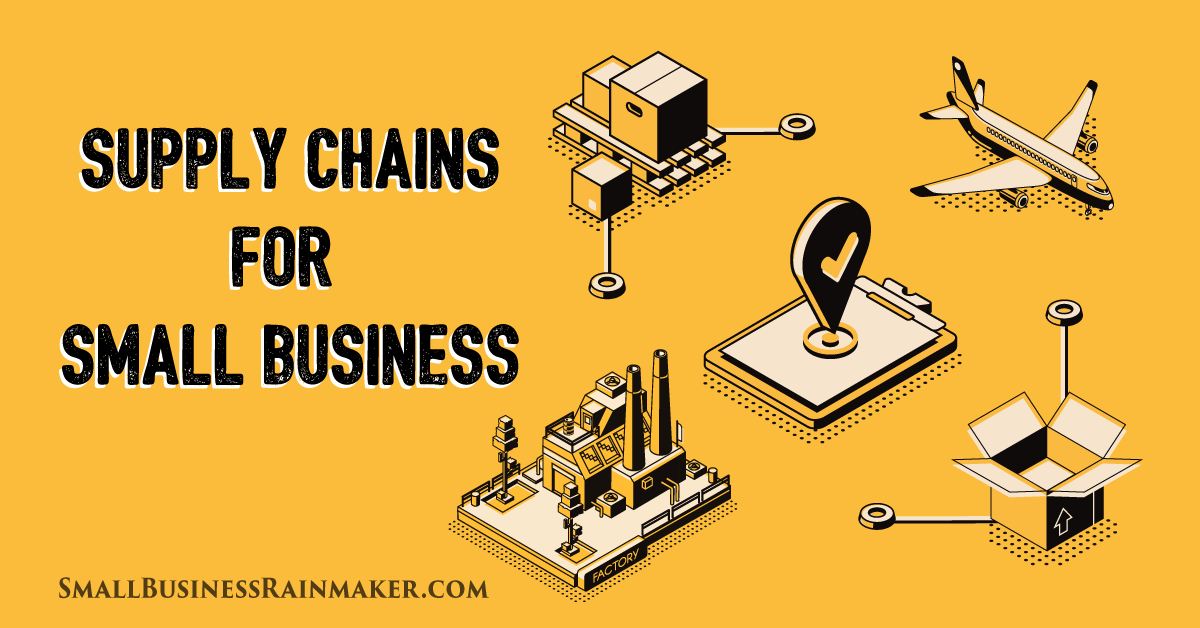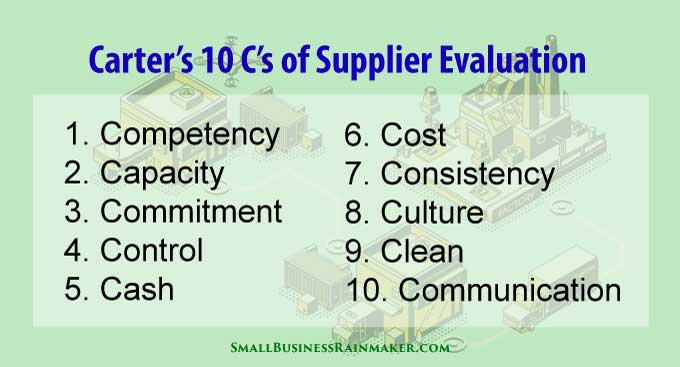
In a small business, you have an opportunity larger companies don’t always have. Large, long-established supply chains can be wasteful and inefficient, and employees in larger companies don’t necessarily understand their own supply chains or know how to improve them.
Above-average supply chains, though, lead to above-average revenue growth in 79% of the companies that have developed them, according to Deloitte. In contrast, only 8% of companies with below-average supply chains had such revenue growth.
In addition to increased revenue, an above-average supply chain can lead to:
- Above Average Efficiency: Reducing waste in your supply chain increases the efficiency of creating products from raw materials.
- Below Average Expenses: Eliminate or minimize expenses that don’t add value to your products.
- Improved Profits: Reducing expenses can boost profits.
- Better Timelines and Reputation: Great supplier relationships can improve your timeliness and stock availability, improving your reputation and attracting customers.
The opportunity for you is to craft an above-average supply chain from the very beginning of your small business, or to quickly update it. We’re going to explore how you can do that in the steps below.
7 Steps to Setting Up Your Small Business Supply Chain
Improve your supply chain whenever you can! If you’ve already developed a supply chain, you can always improve its efficiency and timeliness. Or you can build it the right way from the very beginning. Let it be a major part of your business, closely aligned with your mission.
Here’s how to plan your supply chain and to find new suppliers.
1. Know Your Vision and Your Numbers
Decide on the products you want to sell based on what has sold well before and what your mission is. You must have a sense of what customers really want, including feedback and support.
Estimate the demand for each product. Prepare specific numbers to show to potential suppliers. List all the parts, materials, or finished products you need and the amounts you would order from each supplier.
2. Make a Shortlist of Suppliers to Eventually Interview
Whittle down the whole universe of potential suppliers to a shortlist of candidates you will eventually interview. You can find them through these sources:
- Trade Publications
- Trade Associations
- Professional Recommendations
- Local Business Directories
- Trade Shows
- Business Organizations (such as Chambers of Commerce)
3. Rate the Suppliers

A great way to vet suppliers is to interview them using Carter’s 10 Cs of Supplier Evaluation. Rate them on a scale in each of the following areas:
- Competency: Their track record of success
- Capacity: The size of orders they can handle
- Commitment: Their commitment to you and to standards of quality
- Control: Their control over their own processes and supply chain
- Cash: Their financial strength, including liquidity and positive cash flow
- Cost: Their prices compared to similar suppliers' prices
- Consistency: Their ability to produce the same products and quality repeatedly
- Culture: Their core values
- Clean: Their care of people and the environment
- Communication: Their quality and methods of communication
4. Meet the Candidate Suppliers
Try to see first-hand how competent and professional each supplier on your shortlist is. You might not have the resources to fly to other continents, but you can still meet with them through a live video conference. That’s often better than just talking on the phone or emailing.
A meeting can also give you a better sense of whether your business cultures are compatible, especially if they’re much larger than you.
5. Get Quotes and Choose Suppliers
No supplier will rate perfectly in every single category, so decide what qualities in suppliers are absolute must-haves for certain business objectives and which are not as important. For example, a supplier might be amazing at clean production and charge a higher price for it.
Ask for written quotes from your favorite suppliers. If you need to, start with a very small order. You can even use a payment method that carries payment protection on it.
Remember, the lowest price is not always the best if a higher-priced supplier is outstanding in the qualities you most value.
6. Plan for Problems
When products are produced far away, you have to plan for damage and delays. International suppliers can even have different weather seasons and cultural holidays that can slow production or delivery.
Learn all about the location of each supplier. Think about how it can affect your business. If a country has a rainy or monsoon season, for example, you might need waterproof packaging during that time.
7. Set Up a Tracking System
To reduce your stress and increase your transparency, create or adopt an easy-to-use tracking system. It might be just the package tracking feature from FedEx, or it could be specialized supply chain software. Ideally, you should be able to:
- Track each package from the moment it leaves a supplier.
- Keep all your paperwork organized, possibly in the cloud.
- Easily display your supply chain, including suppliers and their qualities, categories, and specialties.
- Account for how international costs like tariffs affect your profits.
- Communicate quickly with your suppliers.
Keep Improving Your Supply Chain
It’s very important for small businesses to develop quality relationships with suppliers. Have regular meetings to ask them if there’s anything else they need. Be friendly! Your supply chain is a vital part of your strategy.
In the future, you may need to quietly reach out to new suppliers, either to replace an unsatisfactory supplier or to have a backup. Your good supplier relationships, your reputation, and the steps above will help you make smooth transitions.
Start with a vision of how your business will satisfy customers. Give them amazing experiences and craft your supply chain to match that vision. You’re doing a brave thing as a small business owner. Commit to being an expert on your supply chain so you can keep bringing the unique products to the world that only you can create.
 Annabelle Smyth is a freelance writer in Salt Lake City, Utah. She enjoys writing about leadership, HR, and employee engagement. She has most recently worked with Avetta. When not writing and educating herself, you can find her hiking the canyons with her dog and friends. You can find her on Twitter @AvettaNews and @AnnabelleSmyth1.
Annabelle Smyth is a freelance writer in Salt Lake City, Utah. She enjoys writing about leadership, HR, and employee engagement. She has most recently worked with Avetta. When not writing and educating herself, you can find her hiking the canyons with her dog and friends. You can find her on Twitter @AvettaNews and @AnnabelleSmyth1.











![The Top Female Founders Around the World [Infographic]](https://www.smallbusinessrainmaker.com/hubfs/images/Blog/top-female-founders-around-the-world.png)



Leave a comment